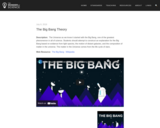
Science Phenomena: HS Earth Space Science - Space Systems
- Subject:
- Physics
- Science
- Material Type:
- Lesson
- Provider:
- The Wonder of Science
- Date Added:
- 10/24/2021
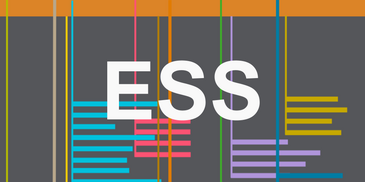
This collection contains recommended high school Earth and Space Science SEEd lessons, activities, and other resources from the eMedia library.

Science Phenomena: HS Earth Space Science - Space Systems
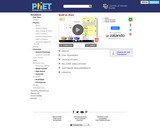
Build an atom out of protons, neutrons, and electrons, and see how the element, charge, and mass change. Then play a game to test your ideas!
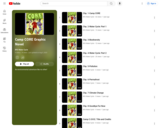
This resource is a YouTube playlist with videos to accompany the Camp C.O.R.E. graphic novel from the Modern Water Cycle collection by BYU and the USGS. The novel takes students through a scientific adventure in ecosystem science and includes chapters about the water cycle, biodiversity, pollution, permafrost, and climate change. Humans are a critical part of the global ecosystem and impact many aspects of it through our lifestyles. Each chapter covers an area where recent research has highlighted our influence and potential consequences of the status quo. We wrote this novel as a fun way to introduce this information to a younger audience in a more friendly format. The videos are another way to access the content of the novel. To download a copy of the novel itself, search "Camp C.O.R.E. graphic novel" in eMedia or visit the BYU Modern Water Cycle website.

Mix two gases to explore diffusion! Experiment with concentration, temperature, mass, and radius and determine how these factors affect the rate of diffusion.
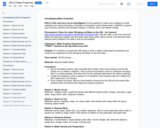
Plan and carry out an investigation of the properties of water and its effects on Earth materials and surface processes. Examples of properties could include waterÕs capacity to expand upon freezing, dissolve and transport material, or absorb, store, and release energy.

This is a high school student science experience tied to SEEd standard ESS.3.3. In this experience students build a conceptual model for why wind moves as it does around Earth.
These experiences were designed to support students in engaging in science investigations with siblings and/or parents at home and then report back about what was discovered. They were created in a way that is easily adaptable for both online and printed formats. They are formatted to help students wonder about and investigate the science phenomena happening in the world around them. These experiences do not describe how students should write up and return work to their teacher. It is up to each teacher to adapt them to best meet student needs. When individualized by the teacher, a student could be asked to engage in one or more of these experiences a week and report back. This format aligns closely to the vision and expectation of the SEEd standards.

This is a high school student science experience tied to SEEd standard ESS.3.3. In this experience students investigate how objects float in water with different qualities.
These experiences were designed to support students in engaging in science investigations with siblings and/or parents at home and then report back about what was discovered. They were created in a way that is easily adaptable for both online and printed formats. They are formatted to help students wonder about and investigate the science phenomena happening in the world around them. These experiences do not describe how students should write up and return work to their teacher. It is up to each teacher to adapt them to best meet student needs. When individualized by the teacher, a student could be asked to engage in one or more of these experiences a week and report back. This format aligns closely to the vision and expectation of the SEEd standards.

This is a high school student science experience tied to SEEd standard ESS.3.3. In this experience students investigate how water with different qualities moves in water.
These experiences were designed to support students in engaging in science investigations with siblings and/or parents at home and then report back about what was discovered. They were created in a way that is easily adaptable for both online and printed formats. They are formatted to help students wonder about and investigate the science phenomena happening in the world around them. These experiences do not describe how students should write up and return work to their teacher. It is up to each teacher to adapt them to best meet student needs. When individualized by the teacher, a student could be asked to engage in one or more of these experiences a week and report back. This format aligns closely to the vision and expectation of the SEEd standards.
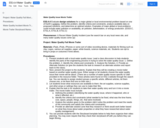
Evaluate design solutions for a major global or local environmental problem based on one of EarthÕs systems. Define the problem, identify criteria and constraints, analyze available data on proposed solutions, and determine an optimal solution. Examples of major global or local problems could include water pollution or availability, air pollution, deforestation, or energy production.
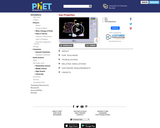
Pump gas molecules to a box and see what happens as you change the volume, add or remove heat, and more. Measure the temperature and pressure, and discover how the properties of the gas vary in relation to each other. Examine kinetic energy and speed histograms for light and heavy particles. Explore diffusion and determine how concentration, temperature, mass, and radius affect the rate of diffusion.
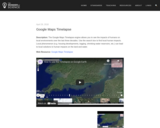
Science Phenomena: HS Earth Space Science - Human Sustainability

Google folder with lesson plan and accompanying resources/ Students use resources to help identify time periods when layers in SE geological columns were deposited. Next they will use maps of Utah through time to identify time periods where San Juan County was covered by water. Water allows for deposition of sediments including salts as the water evaporates. Once they identify time periods they are given a geological column for SE Utah and identify where in time San Juan had ocean/seas/marshes. Last, students will identify the four main natural resources: Potash, Oil and Gas, Copper, and Uranium within the geological columns with teacher direction.

This resource includes posters and images from the Modern Water Cycle collection by BYU and the USGS. The resources highlight the different ways humans influence how water moves. Each image highlights direct human links to the water cycle. Blue Water deals with human water movement. Green Water highlights water that is moved through plants and agriculture including livestock. Gray Water is used to dissolve pollutants and often involves water quality issues or excessive heat.

This resource includes a graphic novel from the Modern Water Cycle collection by BYU and the USGS. The resource takes students through a scientific adventure in ecosystem science and includes chapters about the water cycle, biodiversity, pollution, permafrost, and climate change.Humans are a critical part of the global ecosystem and impact many aspects of it through our lifestyles. Each chapter covers an area where recent research has highlighted our influence and potential consequences of the status quo. We wrote this novel as a fun way to introduce this information to a younger audience in a more friendly format.

This resource includes posters and images from the Modern Water Cycle collection by BYU and the USGS. The images show a water cycle that includes human influence and water quality. This resource includes file attachments and activity ideas for utilizing the files in classroom instruction.

This resource includes posters and images from the Modern Water Cycle collection by BYU and the USGS. The resources emphasize the two-way connection between humans and water. These specific posters and images are from the "Water Along the Coast" series. They address the question: What happens when salt and freshwater interact? This resource includes file attachments and activity ideas for utilizing the files in classroom instruction.

This resource includes posters and images from the Modern Water Cycle collection by BYU and the USGS. The resources are visual definitions of common water cycle terms. The water cycle introduces a lot of new terms for young students. Many teachers focus tightly on these phrases and what they mean physically for the water (e.g. Evaporation: liquid water to water vapor). We also include a variety of places where those changes occur.